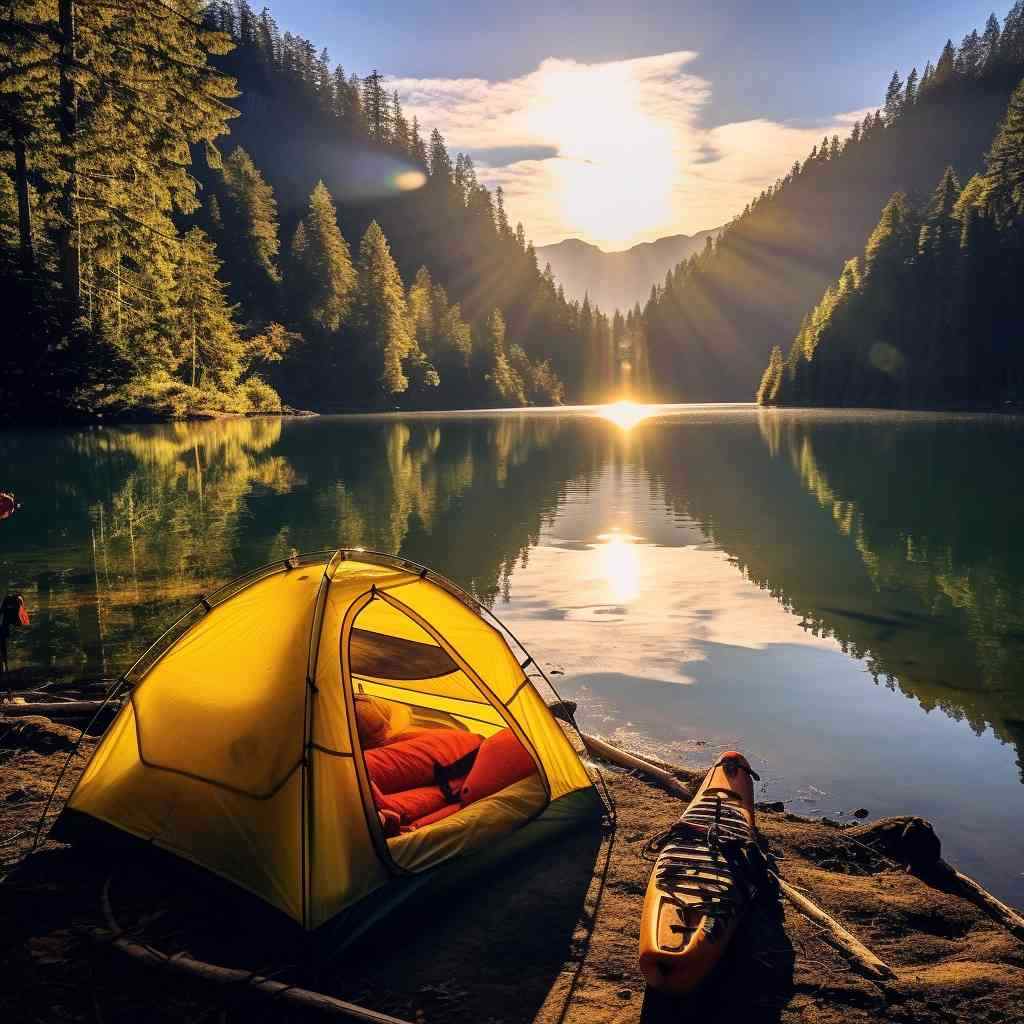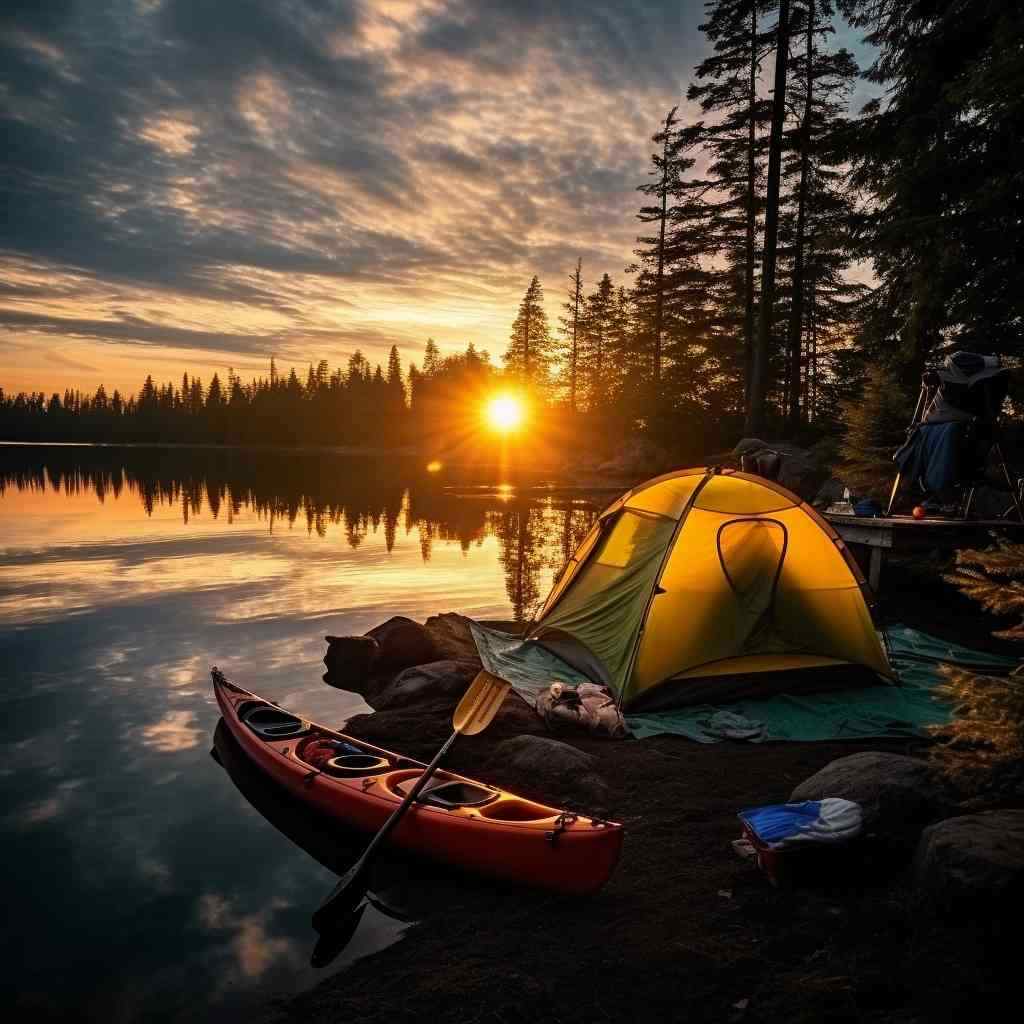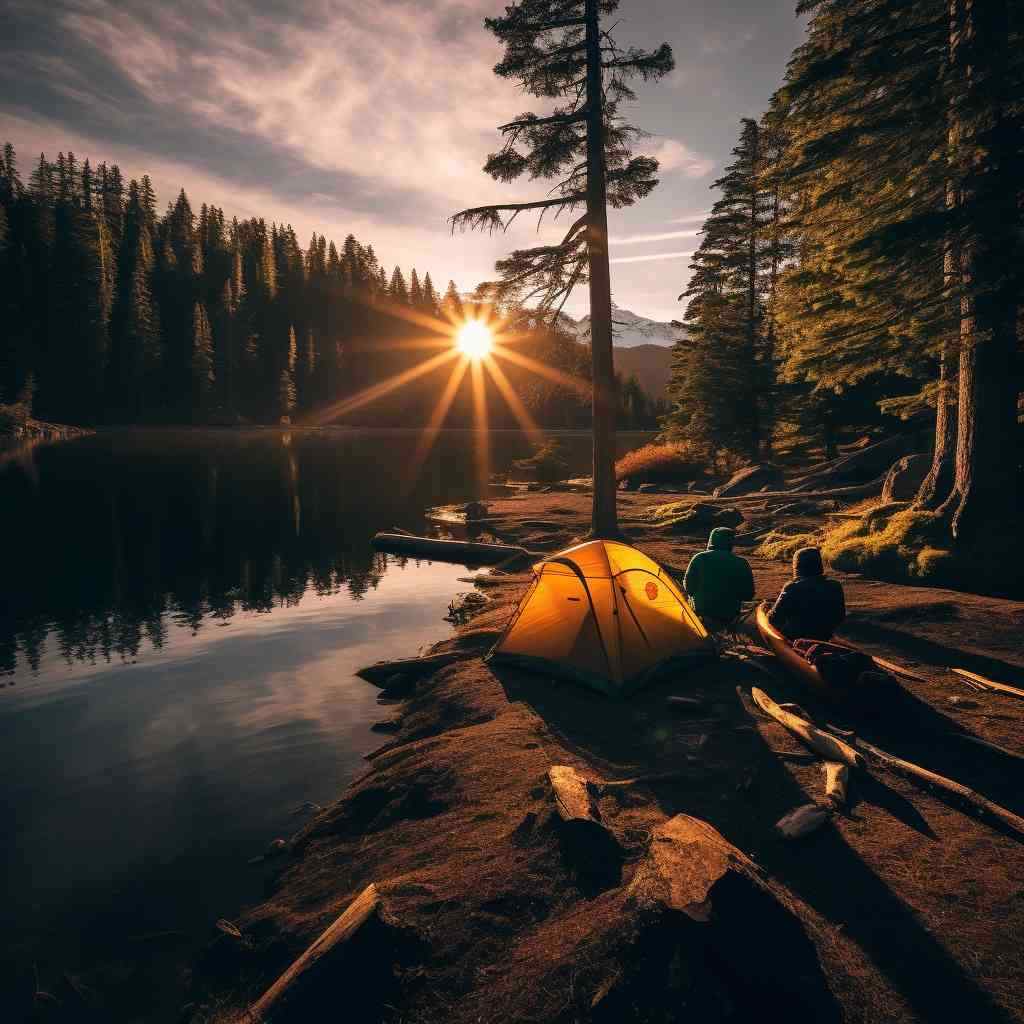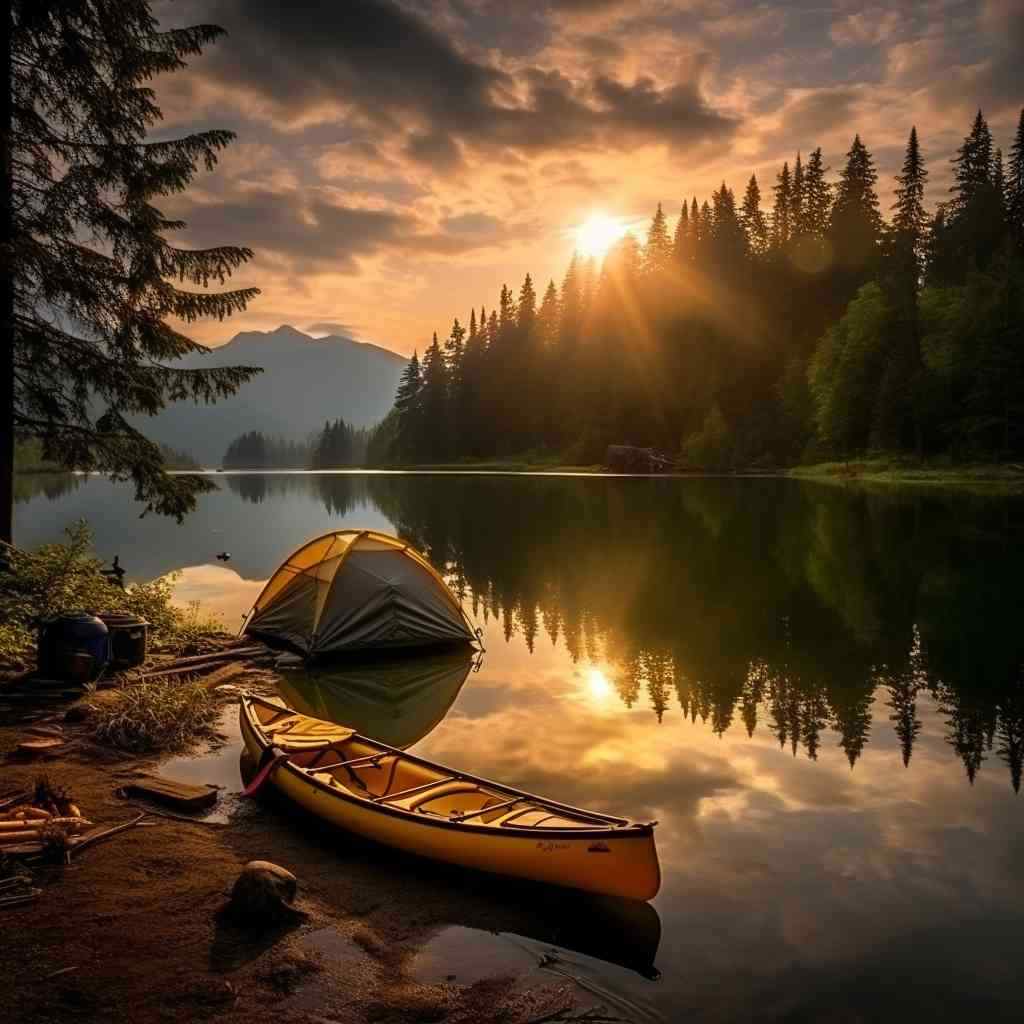The Ultimate Guide to Epic Kayak Camping Adventures

Summary
- Intro: How To Go Camping With Your Kayak: The Complete Guide
- How Do You Pack A Kayak With Camping Gear?
- How Do I Plan An Overnight Kayak Trip?
- Can You Portage With A Kayak?
- How Do You Pack A Double Kayak?
- Final Verdict
- Frequently Asked Questions
- 1. What essential items should I pack for a kayak camping trip?
- 2. Can I just stash my camping gear in my kayak?
- 3. Can I carry my kayak on my vehicle to the camping site?
- 4. Do I need any specific skills to go kayak camping?
- 5. What are the best destinations for kayak camping?
- 6. How do I choose the right kayak for camping?
- 7. What kind of clothing is suitable for kayak camping?
- 8. Do I need a permit for kayak camping?
- 9. What safety measures should I follow while kayak camping?
- 10. What should I consider while setting up camp after kayaking?
- Related Video
- Frequently Asked Questions
Intro: How To Go Camping With Your Kayak: The Complete Guide

Oh, I can’t contain my excitement for this adventure we’re about to embark on—Kayak camping! It’s the perfect blend of two of my favorite activities. Alright, let’s start with the basics: what exactly is kayak camping? Well, it’s precisely what it sounds like – loading up your kayak with all your camping gear and heading out into the wilderness. It’s a wonderful way to escape the hustle and bustle of everyday life and get back in touch with nature. Now, let’s dive into all the details to make your kayak camping trip a memory you won’t forget anytime soon.
The most crucial part of this journey begins with selecting a suitable kayak, or if you already own one, ensuring it’s robust enough for camping. Your kayak should have enough storage space for all the essentials—camping gear, food, water, clothing, and don’t forget safety equipment. You see, kayak camping is a bit like a jigsaw puzzle, with each piece representing an item you need to bring. You need to make sure all those pieces fit together in your kayak.
Choosing a destination is a lifeblood of your kayak camping trip. Depending on your skill level, you might want to stick to calm lakes or rivers if you’re new to this. For those grizzled veterans out there, sea kayaking might be up your alley. Wherever you are off to, make sure to check on any restrictions or permits required in advance. A little homework can save you a lot of troubles down the river, trust me.
Usually, packing for kayak camping can be a bit of a headache. But thankfully, I’ve picked up some tricks over the years. Here’s a nifty one: pack your gear in dry bags and compartmentalize different items. It will keep your stuff dry even in the wettest conditions and also make it easier to retrieve specific items when needed. A well-packed kayak is a safe and efficient kayak!
Oh, and did I mention the importance of practicing your paddling skills before the journey? I can’t echo this advice loudly enough. Having good paddling skills can make the difference between a smooth sailing trip and an exhausting one. Plus, it wouldn’t hurt to have some self-rescue techniques up your sleeve. You know, just in case.
To wrap up, I should tell you that kayak camping is not just about survival, it’s about thrival (yes, you heard it here first). You don’t have to eat canned beans and sleep on a rocky floor. With modern camping gear like lightweight tents, comfortable sleeping pads, and portable cooking stoves, you can add a touch of luxury to wilderness living. So, pack up your kayak and set sail into the heart of nature. Adventure awaits!
How Do You Pack A Kayak With Camping Gear?

So, right out of the gate, how do you pack a kayak with camping gear? You’d be surprised how a bit of good old Tetris skills can come into play here. Every kayak will have different storage capacities and it’s vital to strategize the packing process based on your specific model. The key, my friends, is balance and efficiency.
First things first, you absolutely want to pack your gear in waterproof bags. Rain, splashes, accidental flips - water is bound to find its way. Streamline your gear, pack only the essentials - the goal is to stay light. Camping clutter is downright vexing, not to mention a nightmare to manage on the water.
Weight distribution is the crux here. Heavier items, like water and food supplies, should be stashed closest to the center. This maintains the stability of the kayak, keeping it from tipping over. Trust me, nothing quite compares to the sinking feeling of your kayak flipping over because of poor packing.
Packing your gear in smaller bags can also be of immense help. This practice not only makes searching for specific items significantly easier but also allows for strategic placement. Remember that game of Tetris I mentioned? Well, the irregular shapes of camping gear can be easily stacked and fitted into the corners of your kayak’s storage compartments. Mind you, it’s like solving a jigsaw, but a very rewarding one.
Just remember - efficiency and balance are the golden rules. Stick to these like glue, and packing your kayak with camping gear will be a splash.
How To Go Camping With Your Kayak The Complete Guide Reddit
Oh boy, I do love a good kayak camping trip! Nothing beats the serenity of paddling along a quiet river or lake, setting up camp at a secluded spot, and sleeping under the stars. But, let me tell ya, it does take a bit of planning and preparation. So, I’m here to provide you with a comprehensive guide, sharing my insights to help you navigate your upcoming kayak camping adventure.
-
Choosing the Right Equipment: Your success and enjoyment on a kayak camping trip often hinges on the gear you bring along. Invest in a good-quality kayak with enough storage space for your camping supplies. Don’t skimp on a good paddle - it’s your main source of propulsion!
-
Pack Light but Intelligently: You don’t need to bring the kitchen sink, folks. Compact, lightweight camping gear is key. Prioritize essential items (food, water filter, tent, sleeping bag) and remember, every additional pound could slow you down in the water.
-
Meal Planning: Plan for simple, high-energy meals. Bring a lightweight, portable stove for hot meals – trust me, hot food can be a real morale booster after a long day on the water!
-
Scout Your Route: Take the time to study your planned route. You should know the water conditions and any potential hazards you may encounter. It’s also essential to identify suitable spots for camping along the route.
-
Learn the Basics: New to kayaking? Make sure you know the basics of paddling, maneuvering your kayak, and safety measures. A quick rescue course wouldn’t be a bad idea, either.
-
Be Weather Wise: Check the weather forecast before you head out. Remember, bad weather can turn a leisurely paddle into a challenge, so always be prepared.
-
Safety First: Pack a first aid kit and be sure to bring a life jacket, whistle, and waterproof flashlight. A GPS or compass can also be beneficial if you’re paddling in unfamiliar waters.
-
Respect Nature: Leave no trace behind. Pack out any trash you create and leave campsites as you found them. We’re all responsible for preserving these beautiful natural settings for future generations.
-
An Extra Change of Clothes: Pack an extra set of clothes and keep them in a dry bag. Trust me, there’s nothing worse than sleeping in wet clothes!
By following these guidelines, you’re bound to have a fantastic kayak camping trip. So, gear up, paddle out, and enjoy the serene beauty that only kayak camping can offer.
How Do I Plan An Overnight Kayak Trip?

Alrighty then! I reckon you’re all eager to know about planning an overnight kayak trip. Just a sec, don’t jump the gun! It ain’t as easy as it sounds, but sure as rain, it’s worth every effort you put in. So, lean in and get ready for some serious tips.
First things first, you gotta chart out your route. We’re talkin’ navigation, buddy. Don’t be all willy-nilly about it. Consider the distance, weather, water conditions, and your own abilities. Planning ain’t just about picking a spot on the map and setting sail, but more about assessing risk and making sure your return back is as fun as going out.
Now, gear’s next in line. You know what they say, “When you fail to prepare, prepare to fail”. So, pack smart. A tent, sleeping bag, stove, food and water, navigation tools, bike light, first-aid kit, and toiletries are a must. And don’t forget the insect repellent! Those buggers are real party-poopers!
For food, it’s a matter of balancing nutrition and weight. Dehydrated meals, energy bars, instant oatmeal and coffee, and trail mix are great choices. Keep quenchers too, but remember, water’s heavy!
What about emergencies? (Knock on wood!) Honestly, it’s better to be safe than sorry. Familiarize yourself with first-aid, map reading, and water rescue techniques. Always inform someone about your plans and estimated return.
Finally, the rule of thumb is “Leave No Trace”. Be a good sport, and respect nature. Pack out what you pack in. Don’t be a litterbug, alright?
As such, overnight kayak camping is a thrilling adventure. But without careful planning, it could turn sour quickly. So ensure you’ve checked all the boxes and are good to go. Happy paddling!
Can You Portage With A Kayak?

Well frinds, let’s get right into it, shall we? Kayaking is not just a sport, it’s a way of living life to the fullest. There’s something about the combination of nature, the gentle rocking of the waves, and the rhythm of the paddle that clears the mind and soothes the soul. One question I often get asked is, “” Just to be clear, ‘portaging’ means carrying watercraft over land, between two bodies of water, or around an obstacle like a rapids or dam.
Crikey! I say yes, you absolutely can portage with a kayak! Of course it’s labor – but hey, that’s the point! Portaging a kayak gives you an unprecendented level of flexibility in where you can travel and explore. Just remember, before you head out, you’ll need to think about the weight and size of your kayak. The longer and heavier your kayak is, the more challenging it will be to portage. So, size does matter! (Hey, don’t look at me, I’m just the messenger).
You’ll also need a portage yoke or harness. The yoke, a balanced beam, is carried across the shoulders providing a method of carrying the load, while the harness provides support and distributes the weight across your body. That means a gentler and more comfortable journey for you.
There are lightweight models available if you intend to do a lot of portaging, so choose wisely. Hey, kayak portaging can be a fantastic addition to camping trips. It’s a wild and wonderful way to escape the crowds, just remember not to bite off more than you can chew, and you’ll do great! So go on, give it a whirl! Nothing like a challenge to make the adventure more rewarding, am I right?
How Do You Pack A Double Kayak?
Well, packing a double kayak can initially seem like a daunting task, my friend, but let me tell ya, it’s easier than it looks! The trick is in the technique. Ah, the delightful dance of anticipation as we prepare for the adventure that awaits us.
First off, it’s essential to pack the heaviest items in the middle of the kayak. I’m talkin’ about things such as food and water supplies. This keeps the kayak balanced, maintainin’ a good centre of gravity and stability.
Next up, smaller items, things like your compass, flashlight, map, should be kept within easy reach. Stow them in the kayak’s watertight compartments or secured with bungee cords on the deck. Always remember, accessibility is key when you’re out on the water.
Mmm… feeling the excitement already, aren’t ya? However, keep those clothes and sleeping bags in dry bags and place them towards the ends of the kayak. Ensures they remain dry and act as extra floatation. Smart, huh?
And there’s more, the right packing sequence can save you a heap of trouble. Start with unneeded items, followed by tent and sleeping gear, then cooking equipment and finally, most frequently used items on top.
And voila! Your kayak is packed and ready for the thrilling escapades of camping. It’s all about balance, accessibility, and, let me emphasize, organization. So… ready to embrace the wilderness, are ya?
Final Verdict
Well, here we are. We’ve navigated through the nitty-gritty of camping with a kayak, and boy, it’s been a thrilling journey. By now, you should have a pretty solid grasp of how to go about it – packing the right gear, choosing the ideal campsite, and, of course, maintaining safety at all times. So what’s next? Well, let’s hash out the final verdict.
Taking a trip into the wild with your trusty kayak has got to be one of the most exhilarating experiences on earth. There’s an indescribable feeling of contentment that washes over you as you paddle your way through calm waters, surrounded by nothing but nature’s breathtaking beauty. It ain’t just about the destination though, the journey itself has its own charm – every stroke in the water, every gust of wind brushing against your face, the adrenaline rush, it all adds up to a lifetime experience.
But it’s not all rosy, you gotta be well-prepared to face a few bumps here and there. Nature, as awe-inspiring as it can be, has its own rules - and they need to be respected. Forget just packing the essential gear, you need to be mentally prepared too. Situational awareness, physical endurance, and a decent knowledge of survival skills are all part of the package.
So – is camping with your kayak all it’s cracked up to be? You bet it is! But remember, it’s about respecting Mother Nature and her elements. Do that, and you’ll be rewarded with an experience that’ll leave imprints of unforgettable memories. So, go on, gear up, take that trip. It’s high time you reveled in the freedom that comes with a kayak camping adventure!
Frequently Asked Questions
1. What essential items should I pack for a kayak camping trip?
Pack items that are essential for both camping and kayaking. A tent, sleeping bag, and cooking equipment for camping. For kayaking, a life jacket, paddle, spray skirt, and dry bag. Safety equipment, navigational tools, and waterproof clothing are also necessary. Always remember, pack light!
2. Can I just stash my camping gear in my kayak?
Sure, you can, but be mindful of the weight distribution. Place heavier items towards the center of the kayak to maintain stability. Light and dry stuff can be placed in the ends. Ensure all items are securely packed in waterproof bags to prevent soaking.
3. Can I carry my kayak on my vehicle to the camping site?
Absolutely! You’d need a roof rack or a kayak carrier. Make sure your kayak is securely strapped to the vehicle to prevent damage or accidents. Oh, and don’t forget to check the local regulations about transporting kayaks.
4. Do I need any specific skills to go kayak camping?
Yes, indeed! You should know basic kayaking skills like paddling, turning, and bracing. Understanding rescue techniques and navigation is also crucial. And, of course, camping skills like setting up a tent, making a fire, and so on.
5. What are the best destinations for kayak camping?
Well, the options are endless! It primarily depends on your preferences. You could kayak camp in sea caves, tranquil lakes, or serene rivers. Some popular spots include the San Juan Islands, Everglades National Park, and the Great Lakes.
6. How do I choose the right kayak for camping?
Choosing the right kayak is very important. It should have enough space for gear, be stable, and comfortable to paddle. Longer kayaks are better for camping because they can carry more gear and are generally faster.
7. What kind of clothing is suitable for kayak camping?
Think waterproof and breathable! You might get wet while kayaking, so it’s important to wear clothes made from quick-drying fabric. Layer your clothing to adjust to the changing weather.
8. Do I need a permit for kayak camping?
Sometimes, yes. It depends on where you’re planning to camp. Some public lands require permits, while others don’t. Always check local regulations beforehand.
9. What safety measures should I follow while kayak camping?
Safety first! Always wear a life jacket while kayaking. Pack a first-aid kit and emergency repair kit. Make sure to inform someone about your trip and expected return. Don’t forget to check weather updates regularly.
10. What should I consider while setting up camp after kayaking?
Choose a flat, elevated spot to avoid water logging. Check for overhead dangers like dead branches. Remember to minimize your environmental impact. Leave no trace, as they say!


Comments